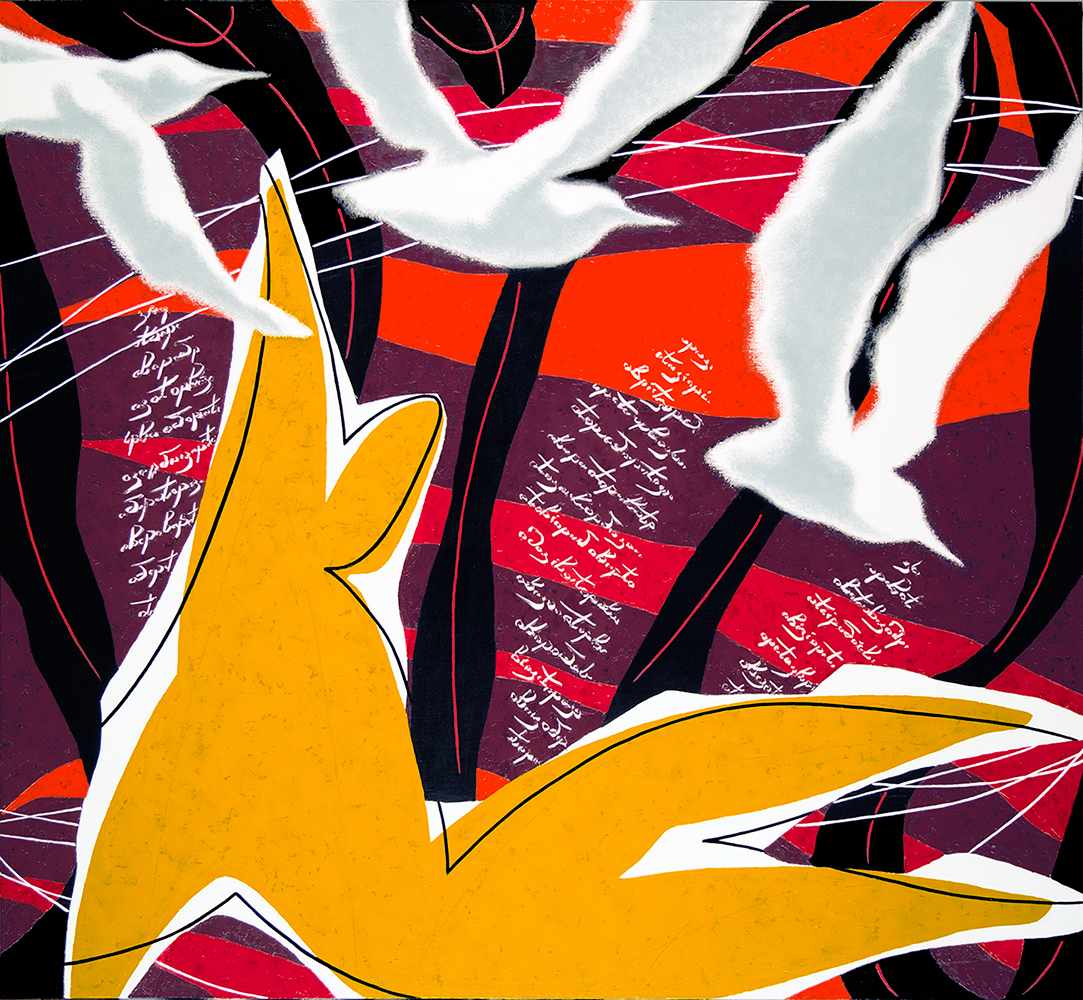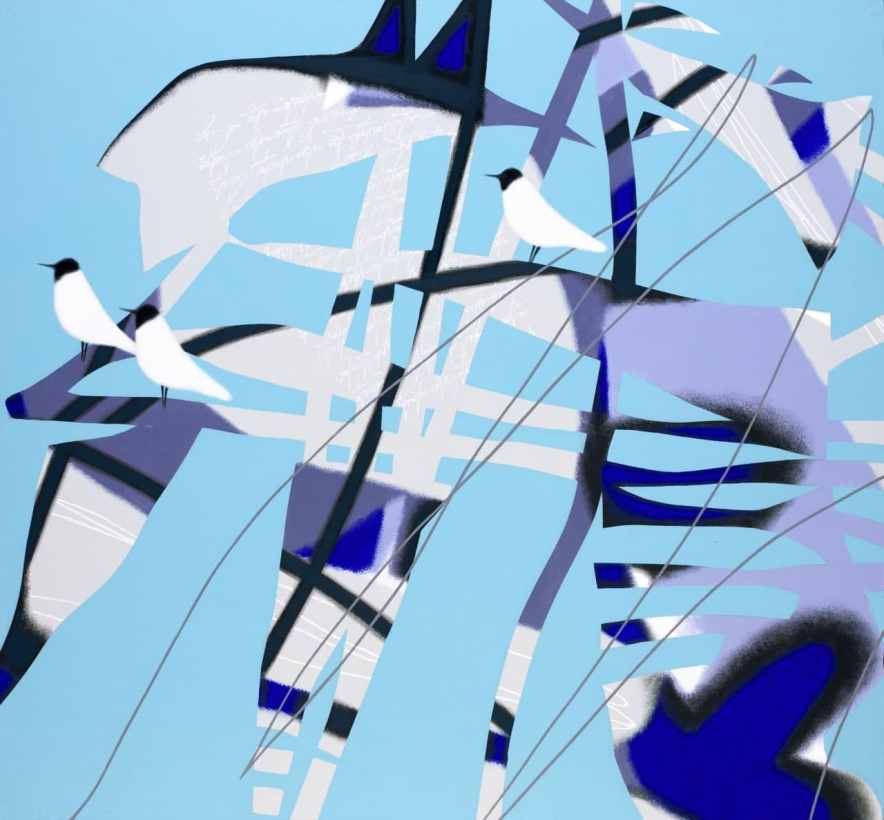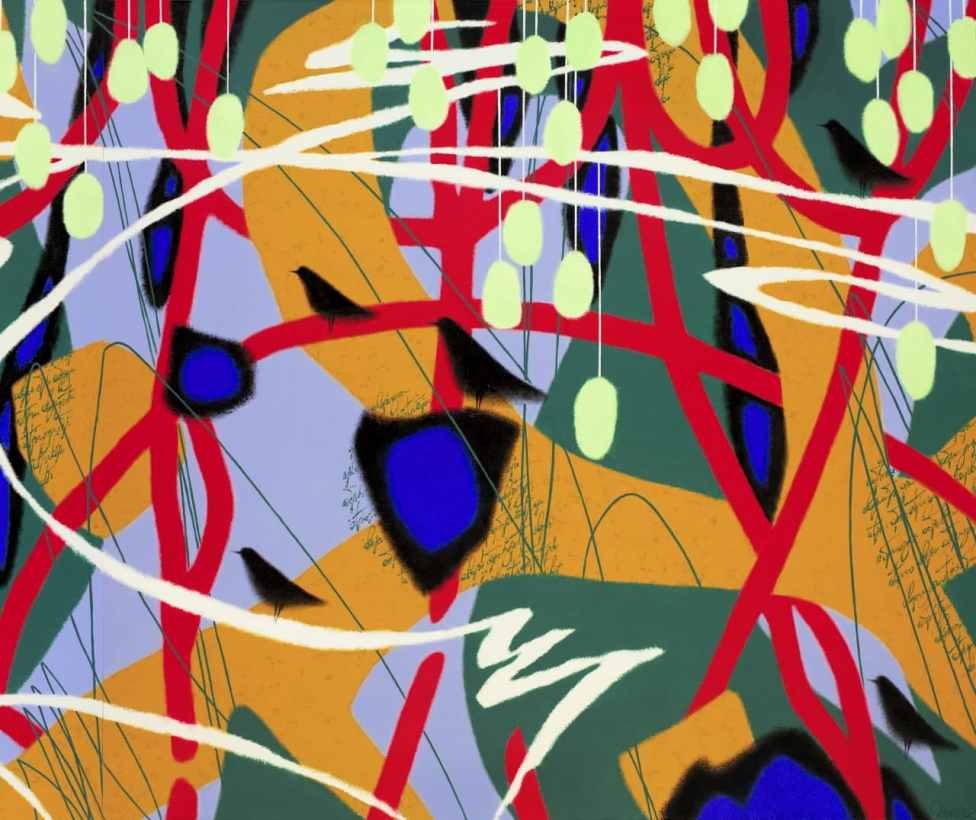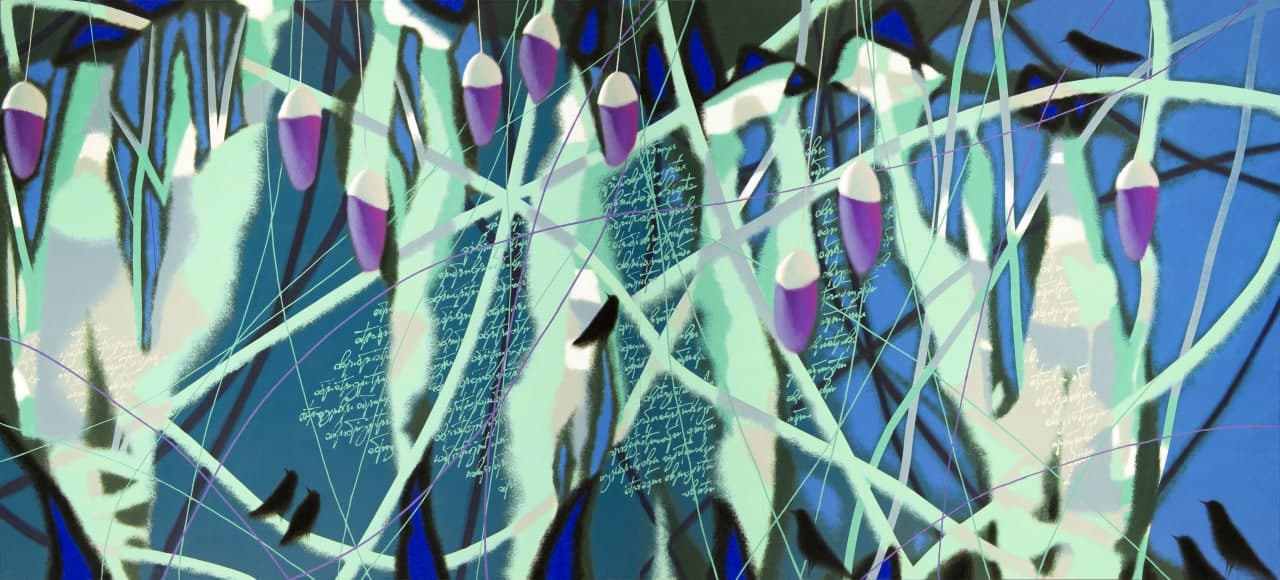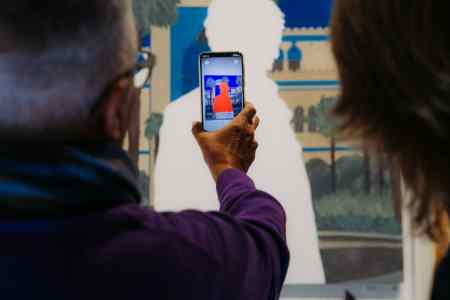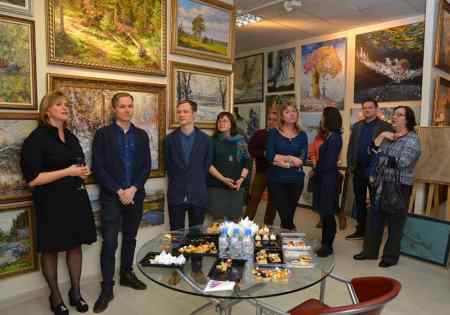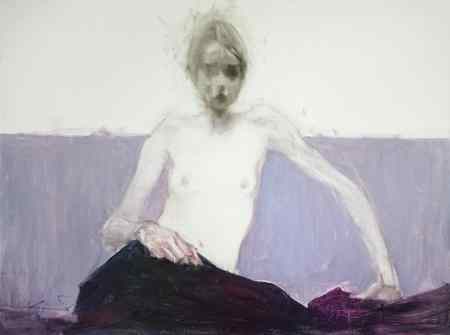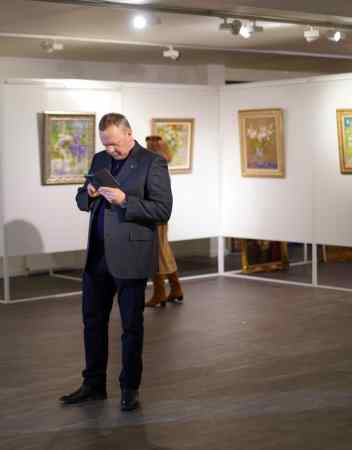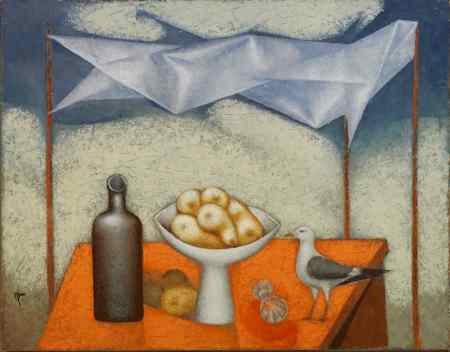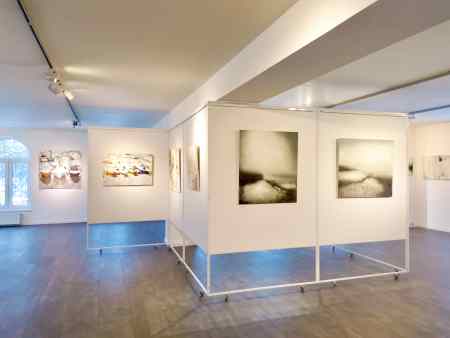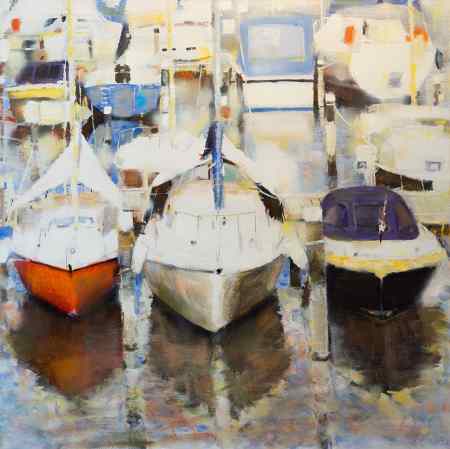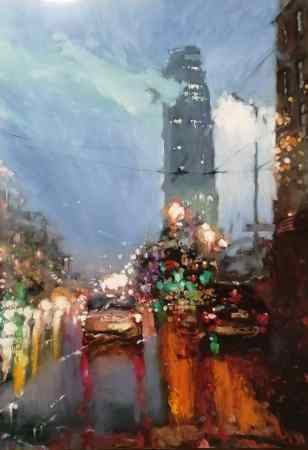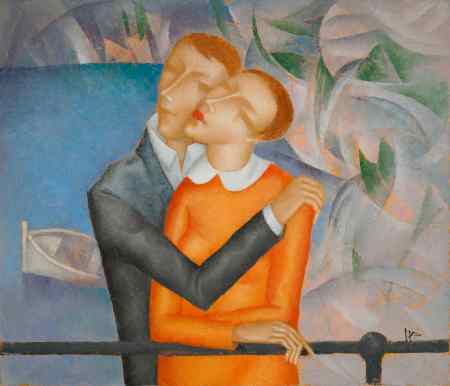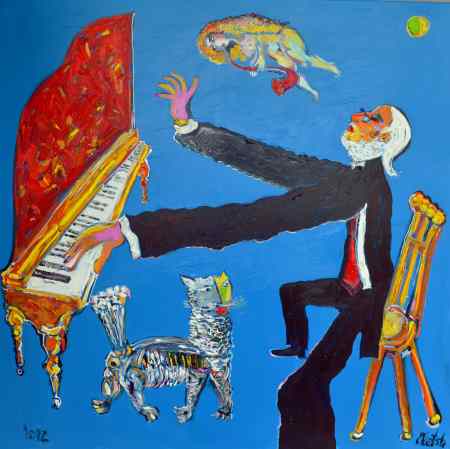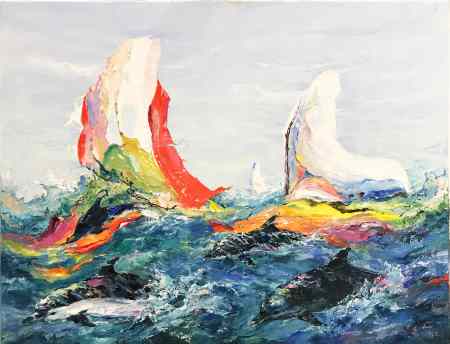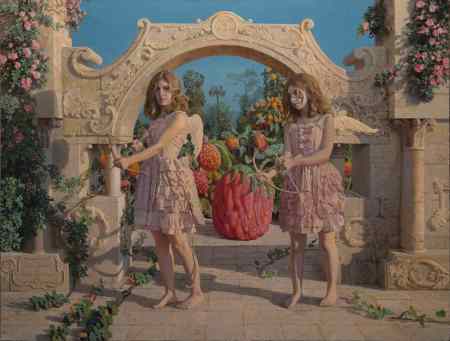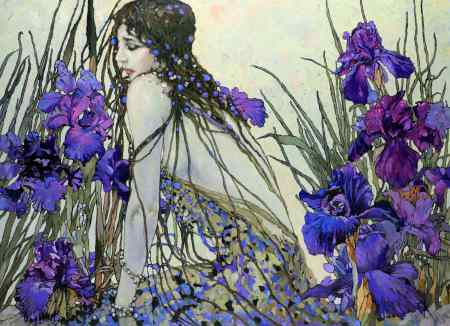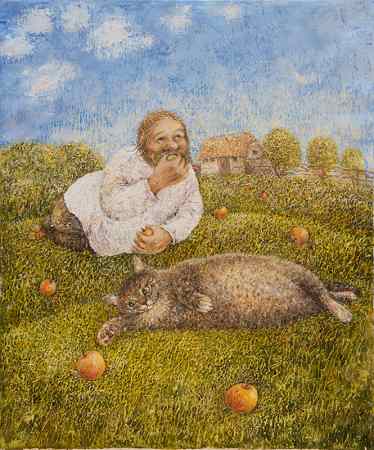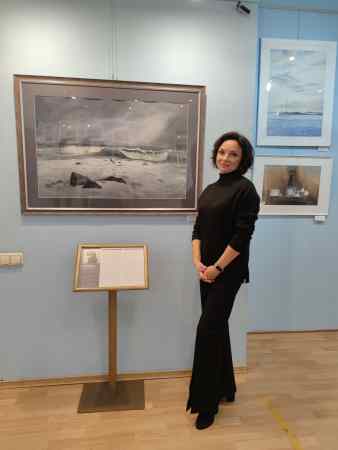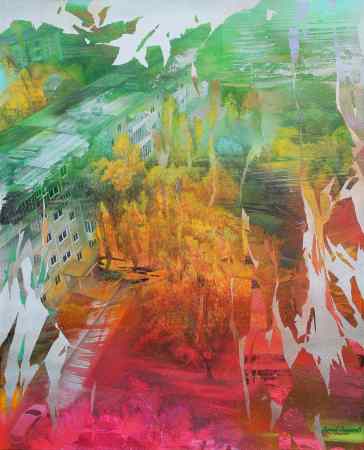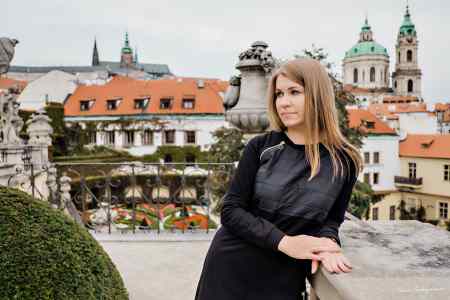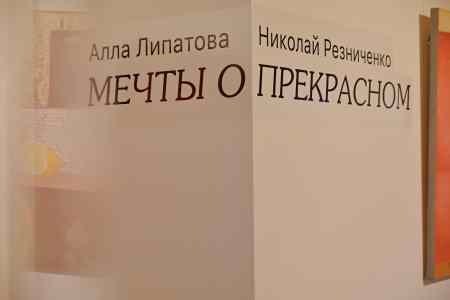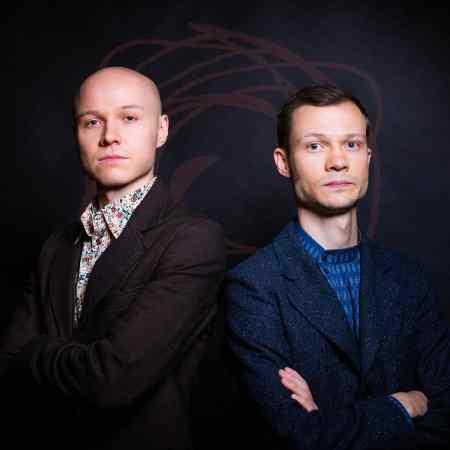
Alexander Oligerov's Series of Artworks "Heavenly Chancellery"
21.05.2021
The Сonsonance of Сolour and Poetry in the Art-Project "Heavenly Chancellery" by the Artist Alexander Oligerov
Date of last update:
21.05.2021
The "Heavenly Chancery" is one of the most successful Alexander Oligerov's art-projects. It combines a series of paintings dedicated to a touching and fragile personage - a bird. Over the centuries, the image of a bird has absorbed a rich symbolic meaning, and in different cultures it has been associated either with an angel or with a messenger of peace. For Alexander Oligerov, the bird, first of all, symbolises the pure soul of a person. The artist believes that when you hold a bird in your hand, it resembles a soul with its softness and fragility.

Paintings from the series the "Heavenly Chancellery" reflect a short period of the artist's work, which takes no more than two years. The artist works in oil, acrylic, or in mixed media, using a palette knife and an end brush. Not only Alexander Oligerov pays attention to technique when making their artworks, but the artist also does not forget about the intangible. He never starts sketching with a specific intention or questioning about the result. The artist is completely immersed in the creative process, which is natural for him and develops by itself. For this reason, Alexander Oligerov perceives each sketch as a discovery, and not just as a preparatory stage, following which ideas may be transferred to the canvas.
The artist's works are full of both figurative and abstract motives. In their work, the author reserves the freedom to choose a variety of techniques, correlating these with artistic images which arise during the creative process of painting. The use of bright colours, the artist's experiments with combinations of smooth shapes and expressively curved lines define the characteristic style of Alexander Oligerov's artworks.
The originality of the artist's paintings also consists in inclusion of lines of text in the composition; sometimes Alexander Oligerov uses entire poems, which act as intrinsic elements of paintings. Viewers would probably be surprised to find that these texts in the paintings, upon closer inspection, turn out to be unreadable. This technique is reminiscent of Lettrism, the French avant-garde movement, which emerged in 1946 in Paris. Paintings and graphic arts in the style of Lettrism often include images looking as unreadable text or sometimes even as compositions based on letters and text.
The originality of the artist's paintings also consists in inclusion of lines of text in the composition; sometimes Alexander Oligerov uses entire poems, which act as intrinsic elements of paintings. Viewers would probably be surprised to find that these texts in the paintings, upon closer inspection, turn out to be unreadable. This technique is reminiscent of Lettrism, the French avant-garde movement, which emerged in 1946 in Paris. Paintings and graphic arts in the style of Lettrism often include images looking as unreadable text or sometimes even as compositions based on letters and text.
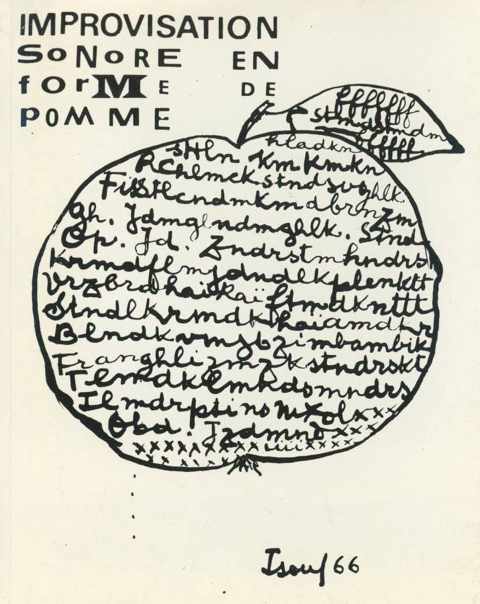
To indicate his presence in the painting, Alexander Oligerov applies texts in his own handwriting, which may be perceived as a form of self-portrait, since the handwriting of each person is unique. According to Alexander Oligerov, this is practically the only way for an artist to leave their personal imprint in an artwork, because artists often act only as guides to connect the world of images with the real world. The 'unreadability' of the texts in the paintings is not connected with the fact that the artist is asking the viewer a riddle or wants to remain 'misunderstood.' Fine art evokes emotions and feelings, which usually keeps the need for rational understanding aside.
In the middle of the twentieth century, 'sound poetry' became an acoustic parallel to Lettrism, and representatives of this movement explored the ideas of transforming poetry into music. Consonant with lettrism, the art of Alexander Oligerov is aimed at synthesis, combination of visual images, music and text. Perhaps that is why the artist considers texts in their paintings as music, which needs to be listened to and felt.
In the middle of the twentieth century, 'sound poetry' became an acoustic parallel to Lettrism, and representatives of this movement explored the ideas of transforming poetry into music. Consonant with lettrism, the art of Alexander Oligerov is aimed at synthesis, combination of visual images, music and text. Perhaps that is why the artist considers texts in their paintings as music, which needs to be listened to and felt.
